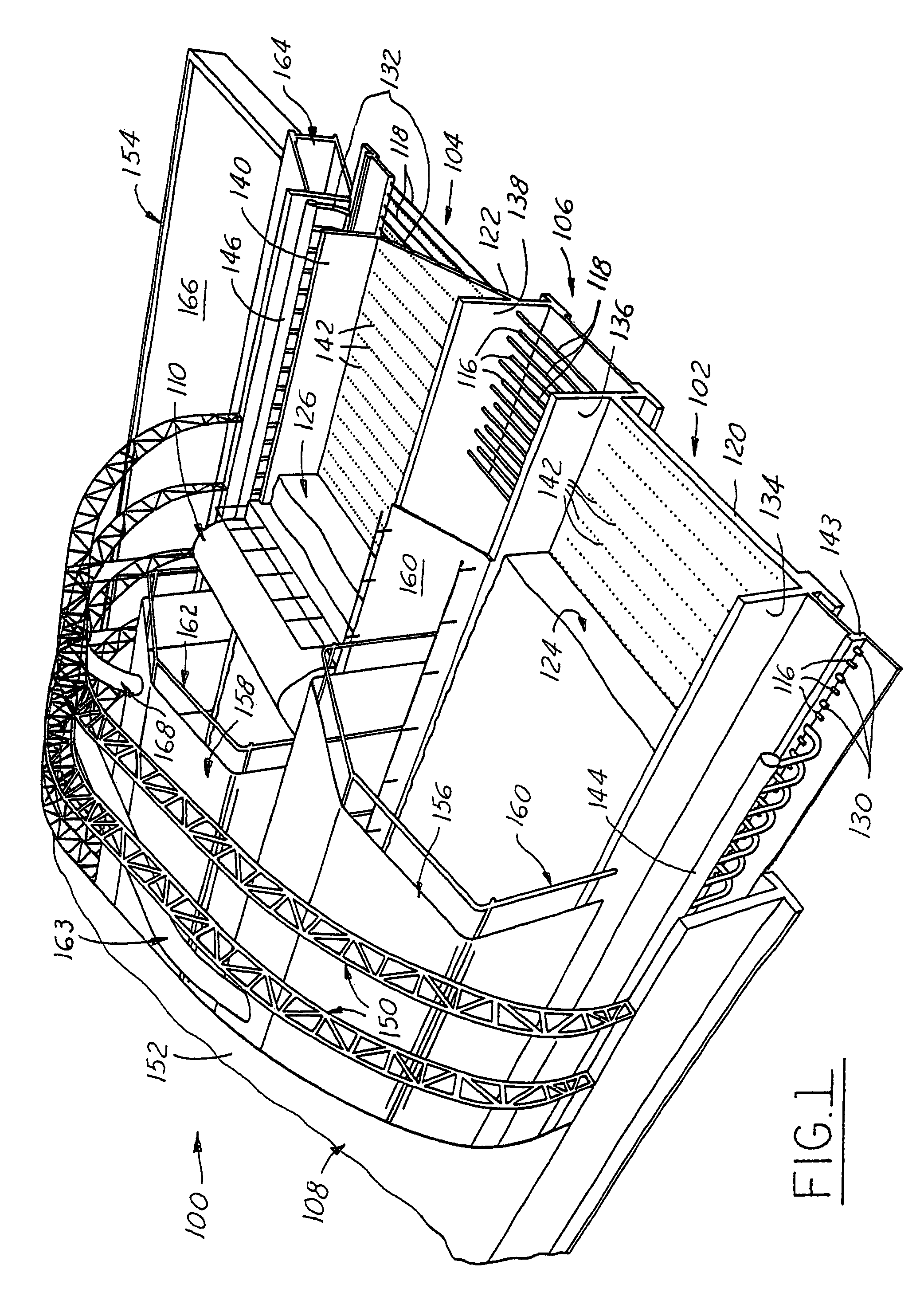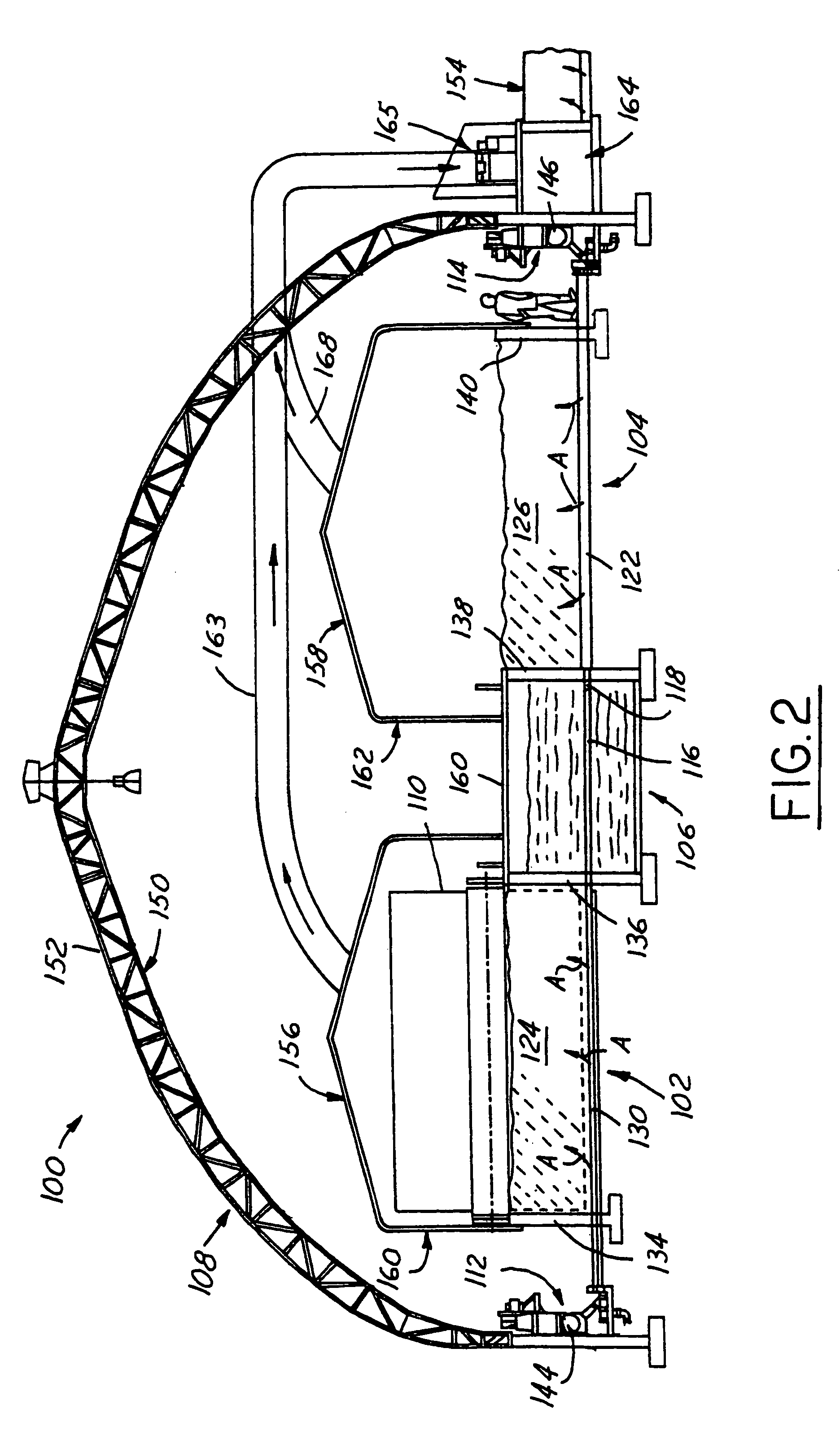Biomass heating system
a heating system and biomass technology, applied in the field of biomass heating system, can solve the problems of inefficient use of energy, inconvenient design, utilization and control of systems, and impeded commercial industry development, so as to enhance enhance the growth of plants in the greenhouse environment, and maximize the service life of biomass decomposition
- Summary
- Abstract
- Description
- Claims
- Application Information
AI Technical Summary
Benefits of technology
Problems solved by technology
Method used
Image
Examples
second embodiment
Thermal Engine Plant Second Embodiment
[0104]FIGS. 3, 4 and 5 illustrate a second embodiment thermal engine plant 200 similar in construction to plant 100 of FIGS. 1 and 2, and those components that are identical to components of the first embodiment are given identical reference numerals and their description not repeated. Thermal engine plant 200 employs a “negative” air flow system, the negative air flow being indicated by the arrows “B” shown in FIG. 4. With a negative air flow system in plant 200, it will seen that there are no internal tent coverings, membranes or tarpaulin structures over the two compost troughs or channels 102 and 104. Instead, the air or atmosphere drawn off from the masses of composting materials 124 and 126 flows down through these masses and is drawn off at the bottom of these masses through the concrete-embedded air conduits 130 and 132 interposed between and paralleling the concrete-embedded heat pipes 116 and 118. Air conduits 130 communicate with a he...
third embodiment
[0108]FIGS. 6, 7 and 8 are semi-schematic layouts of a biofilter air heating system and water heating system third embodiment of the present invention, in which both heat energy and carbon dioxide, as well as warm moist air produced by the composting action, are utilized in a greenhouse. The thermal energy plant portion of this system is designated by the general reference numeral 300 and the associated adjacent greenhouse by the reference numeral 302.
[0109]It will be seen from FIG. 7 that air is taken from the floor area of greenhouse 302 and drawn from it through a blower or air compressor 304 and then exhausted from that blower and forced via outlet duct 306 through a series of manifold distributor ducts 308 buried under a large concrete pad 310 on which the biomass material 312 is placed. Concrete pad 310 is perforated so that outlets 315 of air ducts 314 penetrate pad 310 and are oriented to blow air upwardly into biomass 312, oxygenating it as the air passes therethrough. As t...
fourth embodiment
[0118]FIGS. 9 and 10 are respectively a plan view and side view in simplified diagrammatic format of a fourth embodiment thermal engine plant 400 of a composting heat recovering process using biomass feedstock deployed in an “open-air” (i.e., uncovered) set-up, also in accordance with the invention. Plant system 400 features a compost turner 408 and a conveyor 414 used for dumping the thermally spent biomass and thus resembles thermal engine plant 300 except that it is open-air and simplified with a reduced number of components.
[0119]More particularly, thermal engine plant 400 again uses a concrete slab or pad 402 segmented into twelve troughs or “vessels”404 by means of six-foot high sidewalls 406. These walls 406 separate the vessels into the separate “compost bays”404 and act as tracks for an engine driven compost turner 408 which, by use of tines, fluffs the feedstock, allowing aeration so as to promote decomposition and therefore heat generation. Turner 40...
PUM
| Property | Measurement | Unit |
|---|---|---|
| temperatures | aaaaa | aaaaa |
| temperature | aaaaa | aaaaa |
| power | aaaaa | aaaaa |
Abstract
Description
Claims
Application Information
 Login to View More
Login to View More - R&D
- Intellectual Property
- Life Sciences
- Materials
- Tech Scout
- Unparalleled Data Quality
- Higher Quality Content
- 60% Fewer Hallucinations
Browse by: Latest US Patents, China's latest patents, Technical Efficacy Thesaurus, Application Domain, Technology Topic, Popular Technical Reports.
© 2025 PatSnap. All rights reserved.Legal|Privacy policy|Modern Slavery Act Transparency Statement|Sitemap|About US| Contact US: help@patsnap.com



